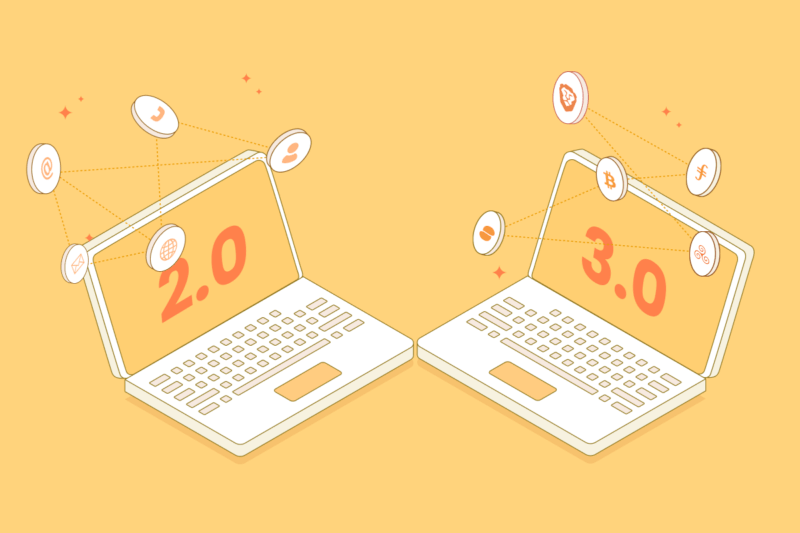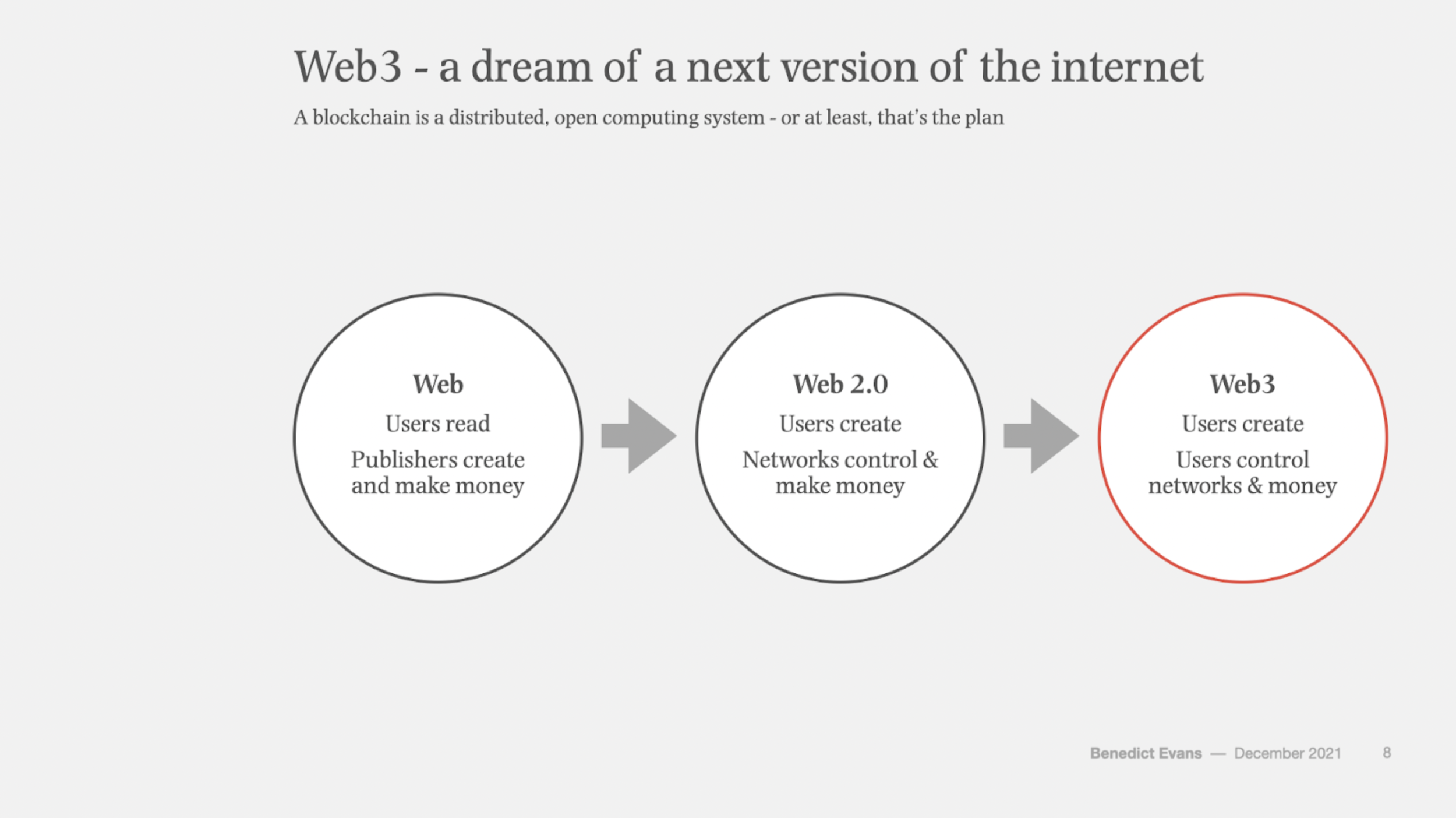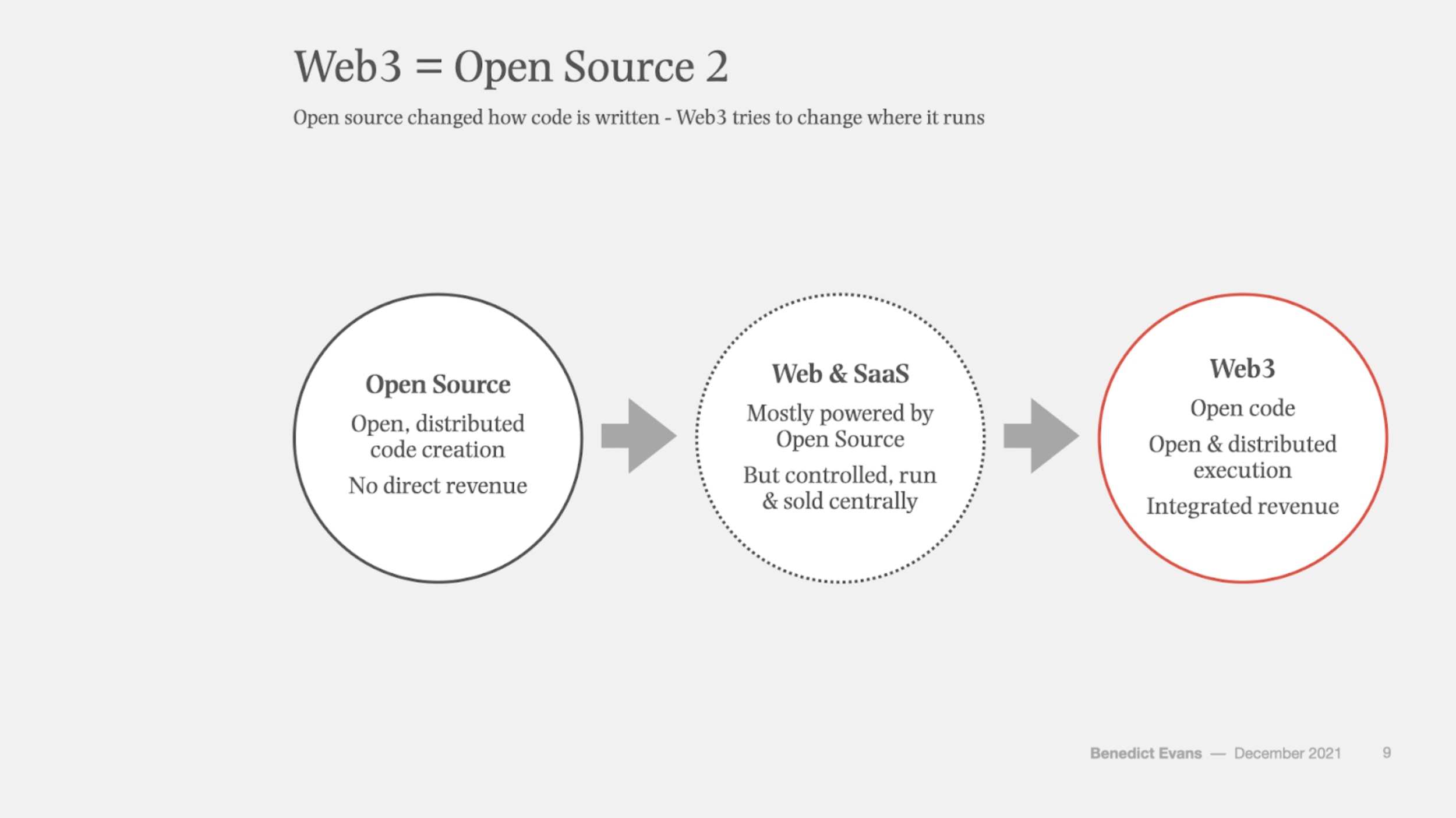What is Web3?
To visualize, Benedict Evans, a respected tech analyst, has produced these helpful flow charts in his annual deck.
Building on these, here is why I think it is important to work towards Web3 to keep the internet open and exciting:
Web1 (the 90s to early 2000s)
The key feature of Web1 is that it was governed by open protocols, which meant that entrepreneurs like Jeff Bezos (founder of Amazon) and Larry Page and Sergey Brin (founders of Google) could build internet services that they truly owned. Users and developers could accumulate value on HTTP or SMTP without being rug pulled like they would on Facebook or Twitter today.
Web2 (early 2000s to present-day)
The key feature of Web2 is that it is governed by siloed and centralized platforms built by a new wave of entrepreneurs like Mark Zuckerberg (founder of Facebook) and Jack Dorsey and Evan Williams (founders of Twitter). These dominant tech giants accumulate most of the value by being extractive to users and competitive to developers, and mobile technology only accelerated their domination.
Web3 (present-day to future)
The key feature of Web3 is that it is governed by neutral and decentralized blockchains imagined by programmers like Satoshi Nakamoto (inventor of Bitcoin) and Vitalik Buterin (inventor of Ethereum) upon which users and developers can own parts of again. Users can do this by buying or earning tokens, and if developers want to build an application on top of a blockchain, they do not have to worry about it charging them a 30% take rate in the future like Apple’s App Store.
If you believe the internet can be a better place than it is today, Web3 is the answer.



